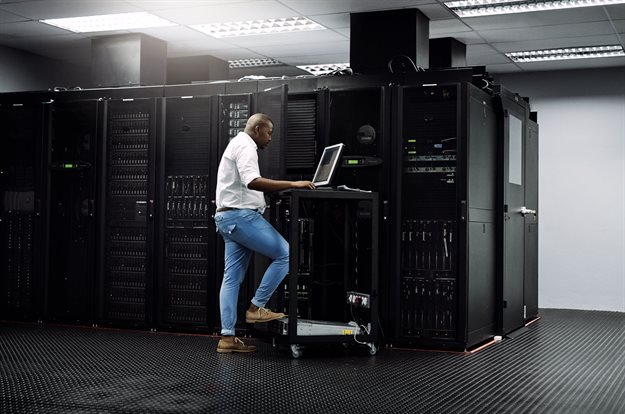New report highlights thriving data centre market in SA, Sub-Saharan Africa

The research analyses input costs – including labour and materials – across 32 key markets, alongside industry sentiment and insight from data centre professionals.
Hotspots in Africa
The 2019 report points to the rise of new hotspots across the globe as technological investment in emerging economies takes hold. On the African continent, in Nairobi, Kenya, average build costs stand at $6.5 US per watt on the back of investment required to meet the government’s focus on digitisation of the economy and in response to the arrival of tech giants.
South Africa is highlighted as another emerging market on the continent. With total GDP exceeding $315bn, internet literacy now stands at 55% amongst its 50 million citizens. South Africa is ranked 23rd globally on Cloudscene based on data centre density.
Dan Ayley, global head of hi-tech and manufacturing for Turner & Townsend, says: “Nairobi has risen three places from last year's table to take position 20, indicating the spread of market activity across Sub-Saharan Africa. It's still more expensive to build a data centre in Nairobi than Johannesburg, South Africa, which remains in cost spot 25 with average build costs of at $6.2 US per watt.”
A thriving industry in South Africa
With several submarine cables interconnecting South Africa to Asia and Europe, Johannesburg has up to 52 internet users per 100 people, and the connectivity ecosystem is made up of 60 colocation data centres, 319 cloud service providers and six network fabrics.
According to the report, the data centre construction markets in both Johannesburg and Cape Town are hot with key projects coming to fruition and hyperscale investments increasing, with South Africa being seen as a stepping stone into the rest of the African continent.
“South Africa’s data centre industry is thriving, with Johannesburg its single largest market by some margin – twice the size of Cape Town. Last year (2019) saw an increase in market size in both Cape Town and Johannesburg,” adds Ayley.

The global picture
Global demand for new space for data centres looks set to continue into 2020, with just 9% of respondents to the research believing that demands have been met in their markets in the last year – down from 12% in 2018. 70% of those surveyed highlighted the impact of data sovereignty and data protection acts – including those being brought in by the EU, Switzerland and Kenya – as a major catalyst for demand.
The most significant limiter on growth over the next five years is seen as availability of power, especially in the context of pressure on the industry to decarbonise. In Turner & Townsend’s survey, the industry is split 50:50 on whether technological advances with solid state batteries alongside green energy sources can render traditional fossil fuel generators obsolete.
Pressing challenges
Ayley adds: “Data continues to be one of the most valuable commodities. As deals get bigger and more profitable, we are seeing investment in both established hot spots and emerging markets heat up – putting pressure on cost and resources.
“Although our report points to certainty in delivery as the key issue for the sector across global markets, sustainability is one of the most pressing challenges coming down the track. With power density requirements for data centres increasing by as much as 50% year on year, it demonstrates that steps towards decarbonisation need to be a priority for how hubs are conceived, built and operated across their lifecycle.”























